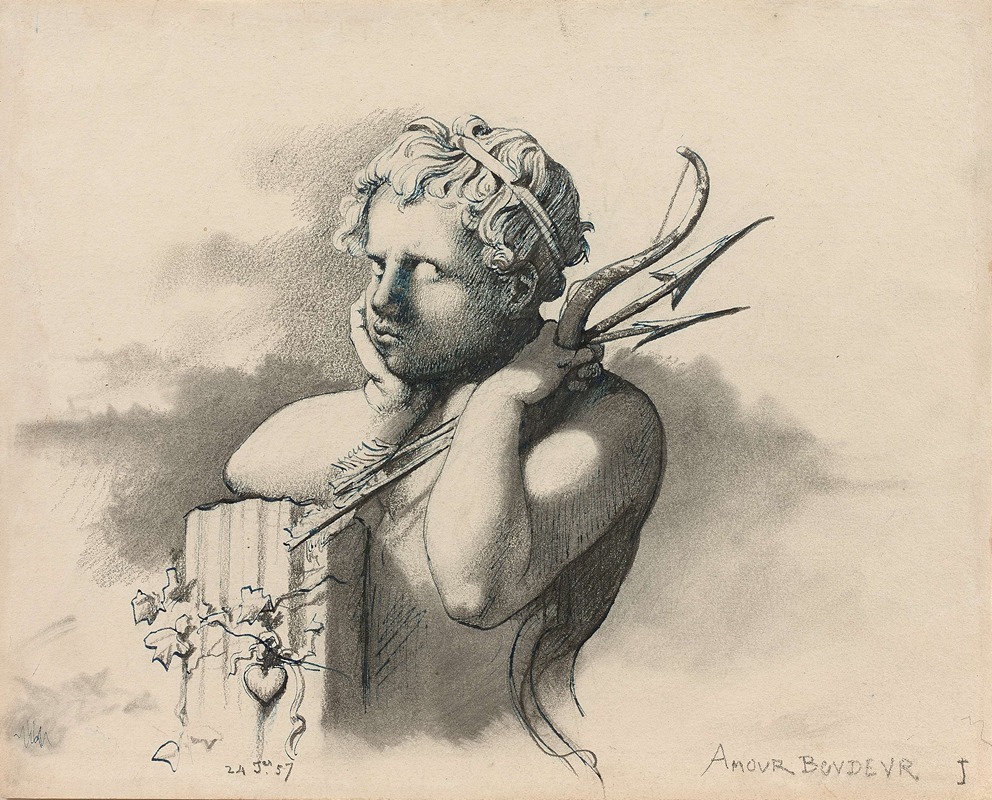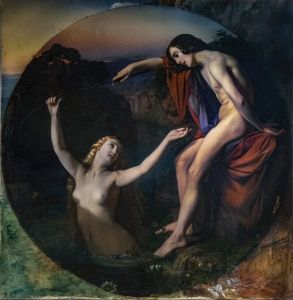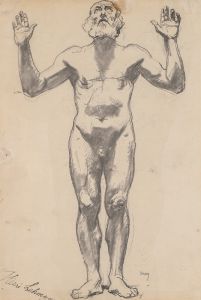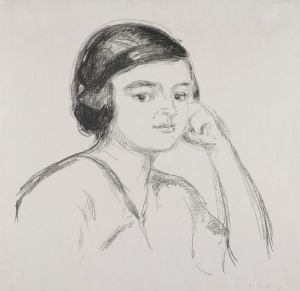
Amour boudeur
A hand-painted replica of Henri Lehmann’s masterpiece Amour boudeur, meticulously crafted by professional artists to capture the true essence of the original. Each piece is created with museum-quality canvas and rare mineral pigments, carefully painted by experienced artists with delicate brushstrokes and rich, layered colors to perfectly recreate the texture of the original artwork. Unlike machine-printed reproductions, this hand-painted version brings the painting to life, infused with the artist’s emotions and skill in every stroke. Whether for personal collection or home decoration, it instantly elevates the artistic atmosphere of any space.
Henri Lehmann's painting Amour boudeur (translated as "Sulking Cupid") is a work by the 19th-century French painter Henri Lehmann, who was known for his portraits, historical scenes, and mythological subjects. Lehmann was a student of Jean-Auguste-Dominique Ingres, and his style reflects the influence of his master, particularly in its neoclassical precision and attention to detail.
Amour boudeur depicts a young Cupid, the Roman god of love, in a moment of apparent displeasure or sulking. The figure is rendered with delicate detail, showcasing Lehmann's skill in portraying the human form and emotion. The painting is notable for its soft, harmonious color palette and the serene yet introspective mood it conveys. The composition emphasizes the figure of Cupid, who is often associated with themes of love and desire, but here is presented in a more contemplative and humanized manner.
The exact date of the painting's creation is not widely documented, but it is consistent with Lehmann's broader body of work, which often explored classical and allegorical themes. Lehmann was active during the mid-19th century, and his works were exhibited at the Paris Salon, where he gained recognition for his technical skill and refined aesthetic.
Currently, Amour boudeur is housed in the Musée des Beaux-Arts in Angers, France. The museum's collection includes a range of works from the Renaissance to the 20th century, and Lehmann's painting is part of its 19th-century holdings. The painting is appreciated for its blend of classical inspiration and emotional depth, which are hallmarks of Lehmann's artistic approach.
Henri Lehmann (1814–1882) was born in Kiel, Germany, but spent much of his career in France, where he became a prominent figure in the art world. He was a member of the Académie des Beaux-Arts and a professor at the École des Beaux-Arts in Paris, influencing a generation of artists. While his work is less well-known today compared to some of his contemporaries, it remains an important example of 19th-century academic painting.
Amour boudeur exemplifies Lehmann's ability to merge technical mastery with a nuanced exploration of mythological themes, offering viewers a glimpse into the emotional complexity of his subjects.


















